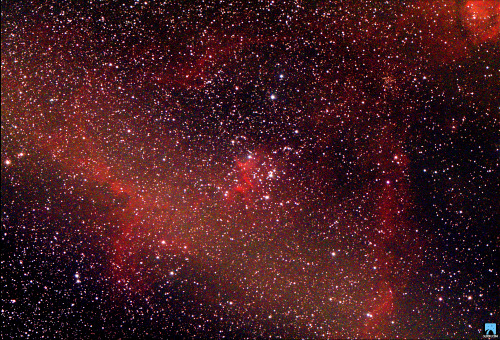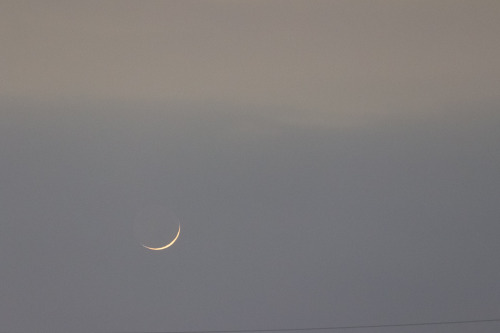This Is The Heart Nebula! 💖💖💖

This is the Heart Nebula! 💖💖💖
Happy Valentine’s Day! To celebrate this occasion, here is the beautiful Heart Nebula, an emission nebula with dark dust lanes and glowing red hydrogen gas. The heart shape of the nebula is driven by stellar winds from the hot stars inside, some of which have masses up to 50 times the Sun! 💕💕💕
Taken by me (Michelle Park) using the Slooh Canary Two telescope on February 7th, 2022 at 21:13 UTC.
More Posts from Mystarypi and Others


a snom! requested by @cassiapeia


This is the Orion Nebula! ✨✨✨
Thought to be a cosmic fire of creation by the Mayans, the Orion Nebula’s bright, vibrant colors come from the massive stars in the open star cluster at the center of the nebula. This star forming region is giving birth to thousands of stars, each of them only a few million years old! 💫💫💫
Taken by me (Michelle Park) using the Slooh Canary Two telescope on March 21st, 2021 at 22:53 UTC.




𝐓𝐮𝐞𝐬𝐝𝐚𝐲, 8 𝐝𝐞𝐜 • The fact that it's the last monthly spread of this year seems so unreal..I did this constellation kind of theme because outer space have a special place in my heart and this is my birth month so why not! also let's say goodbye to this unfortunate year and wish that the new moon of 2021 will bring new lights!✨
🎧: 𝐅𝐥𝐲 𝐭𝐨 𝐦𝐲 𝐫𝐨𝐨𝐦_𝐁𝐓𝐒
One of my favorite nebulae ♥♥♥ It looks so beautiful 🥰🥰🥰

NGC 6357: Cathedral to Massive Stars via NASA https://ift.tt/31D4Lqn
How massive can a normal star be? Estimates made from distance, brightness and standard solar models had given one star in the open cluster Pismis 24 over 200 times the mass of our Sun, making it one of the most massive stars known. This star is the brightest object located just above the gas front in the featured image. Close inspection of images taken with the Hubble Space Telescope, however, have shown that Pismis 24-1 derives its brilliant luminosity not from a single star but from three at least. Component stars would still remain near 100 solar masses, making them among the more massive stars currently on record. Toward the bottom of the image, stars are still forming in the associated emission nebula NGC 6357. Appearing perhaps like a Gothic cathedral, energetic stars near the center appear to be breaking out and illuminating a spectacular cocoon.
(Published August 30, 2020)

Join us for a special Star Party Live on Sunday, November 29th at 12:00 pm EST!
The Slooh Ambassadors (which includes me) have been working on this Women are From Venus star party that hopes to encourage women to participate in astronomy!
I will be presenting my research during the event so please consider joining! There will also be other talks made by other Slooh women who are passionate about space.
All you need to do is to make a free account at Slooh.com and then watch the star party on the website! Please let me know if you have any questions and I hope you can attend 😆😆😆

This is the Skull Nebula! 💀💀💀
The glow of this eerie nebula is perfect for Halloween! This planetary nebula has a binary star system with a third star orbiting it. The beautiful colors of this nebula come from the outer layers of a Sun-like star that died in an explosion! 👻👻👻
Taken by me (Michelle Park) using the Slooh Canary Three telescope on October 28th, 2021 at 1:57 UTC.
Hello everyone! A few months ago, I released Project DeLight - an initiative against light pollution in our community.
I just made an instagram for this project so please follow us for updates! ✨✨✨

Blusighs is typing…
2020년07월07일
Day 2(7)/30 of #30dol
I can’t choose between Noteshelf and OneNote, they’re both great but I’m very indecisive on which I’ll be permanently using. Anyways, today was a slow day so I studied less. Btw some time next week or this week, i’ll be posting my shopee haul ! See you <3


Moon (Feb. 13, 2021)
-
 avatarofstars liked this · 1 year ago
avatarofstars liked this · 1 year ago -
 crushy-wushy-mushy reblogged this · 1 year ago
crushy-wushy-mushy reblogged this · 1 year ago -
 hiromusicarts-blog liked this · 1 year ago
hiromusicarts-blog liked this · 1 year ago -
 todo-lo-que-quiero-para-mi reblogged this · 1 year ago
todo-lo-que-quiero-para-mi reblogged this · 1 year ago -
 todo-lo-que-quiero-para-mi liked this · 1 year ago
todo-lo-que-quiero-para-mi liked this · 1 year ago -
 celestialsunboy liked this · 2 years ago
celestialsunboy liked this · 2 years ago -
 dulapulugigi reblogged this · 2 years ago
dulapulugigi reblogged this · 2 years ago -
 froggywaves reblogged this · 2 years ago
froggywaves reblogged this · 2 years ago -
 froggywaves liked this · 2 years ago
froggywaves liked this · 2 years ago -
 bbykittentoes reblogged this · 2 years ago
bbykittentoes reblogged this · 2 years ago -
 celeste20 liked this · 2 years ago
celeste20 liked this · 2 years ago -
 zurgy-space reblogged this · 2 years ago
zurgy-space reblogged this · 2 years ago -
 zurgy liked this · 2 years ago
zurgy liked this · 2 years ago -
 shibushiuniverse reblogged this · 2 years ago
shibushiuniverse reblogged this · 2 years ago -
 shibushiuniverse liked this · 2 years ago
shibushiuniverse liked this · 2 years ago -
 mysticmoon02 liked this · 2 years ago
mysticmoon02 liked this · 2 years ago -
 yayyz reblogged this · 2 years ago
yayyz reblogged this · 2 years ago -
 whom-in-many-fandoms liked this · 3 years ago
whom-in-many-fandoms liked this · 3 years ago -
 borzologist liked this · 3 years ago
borzologist liked this · 3 years ago -
 malwarechips reblogged this · 3 years ago
malwarechips reblogged this · 3 years ago -
 malwarechips liked this · 3 years ago
malwarechips liked this · 3 years ago -
 amongusinrealife reblogged this · 3 years ago
amongusinrealife reblogged this · 3 years ago -
 thescxrlettfox liked this · 3 years ago
thescxrlettfox liked this · 3 years ago -
 impossiblyshynerd liked this · 3 years ago
impossiblyshynerd liked this · 3 years ago -
 winedarkcee reblogged this · 3 years ago
winedarkcee reblogged this · 3 years ago -
 lostintheworld8 liked this · 3 years ago
lostintheworld8 liked this · 3 years ago -
 cherrypersephone liked this · 3 years ago
cherrypersephone liked this · 3 years ago -
 amongusinrealife reblogged this · 3 years ago
amongusinrealife reblogged this · 3 years ago -
 fkvkvnfkvmklmflk reblogged this · 3 years ago
fkvkvnfkvmklmflk reblogged this · 3 years ago -
 webrolly reblogged this · 3 years ago
webrolly reblogged this · 3 years ago
